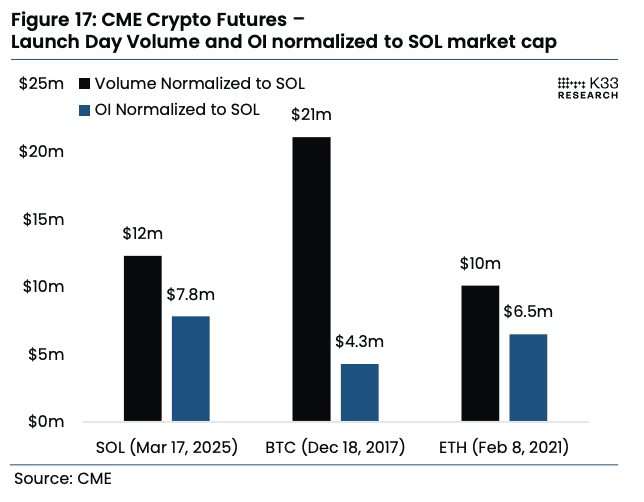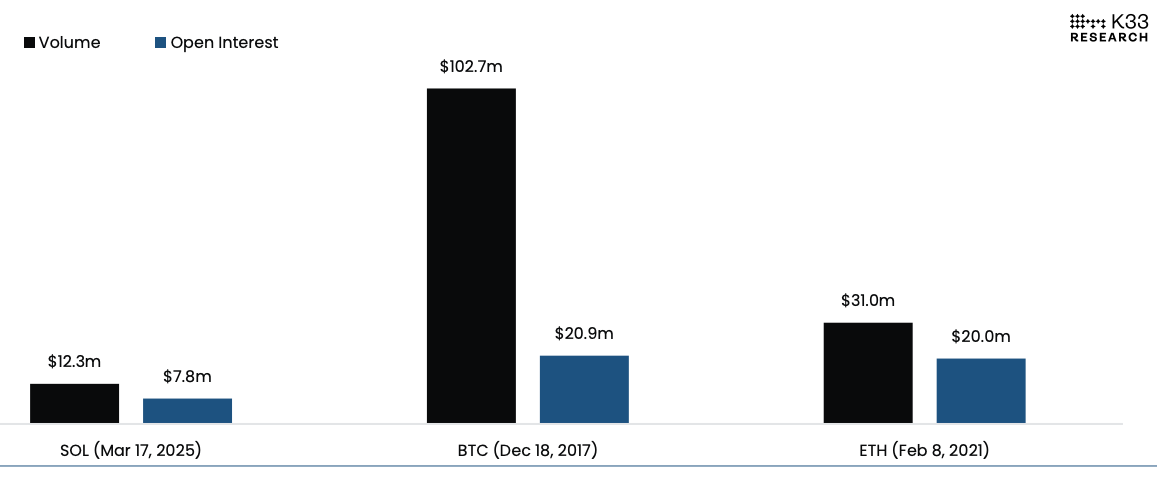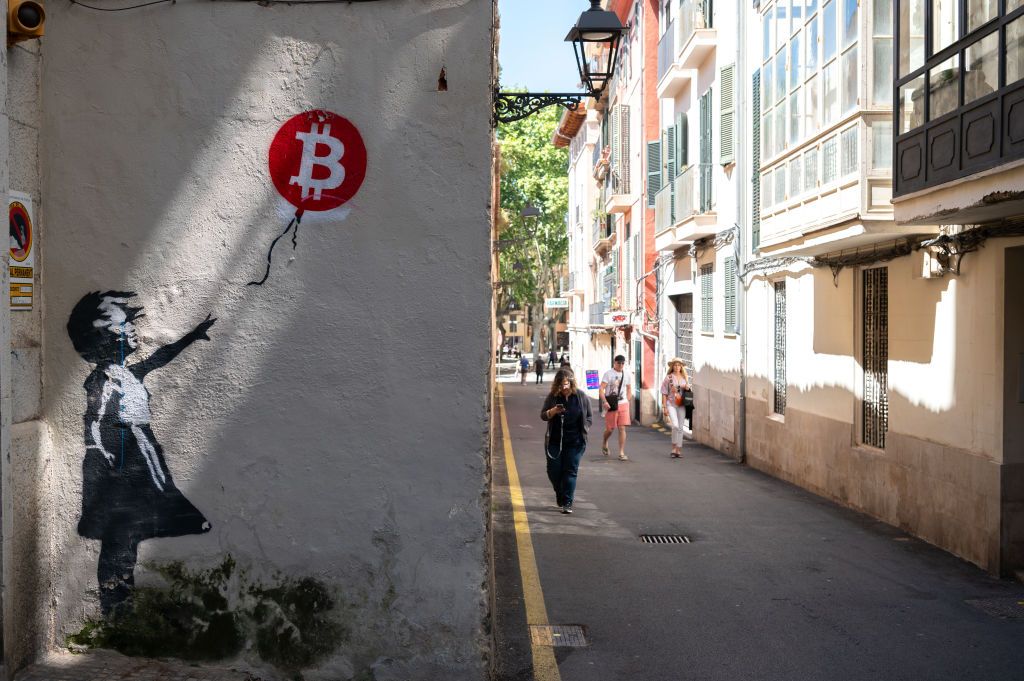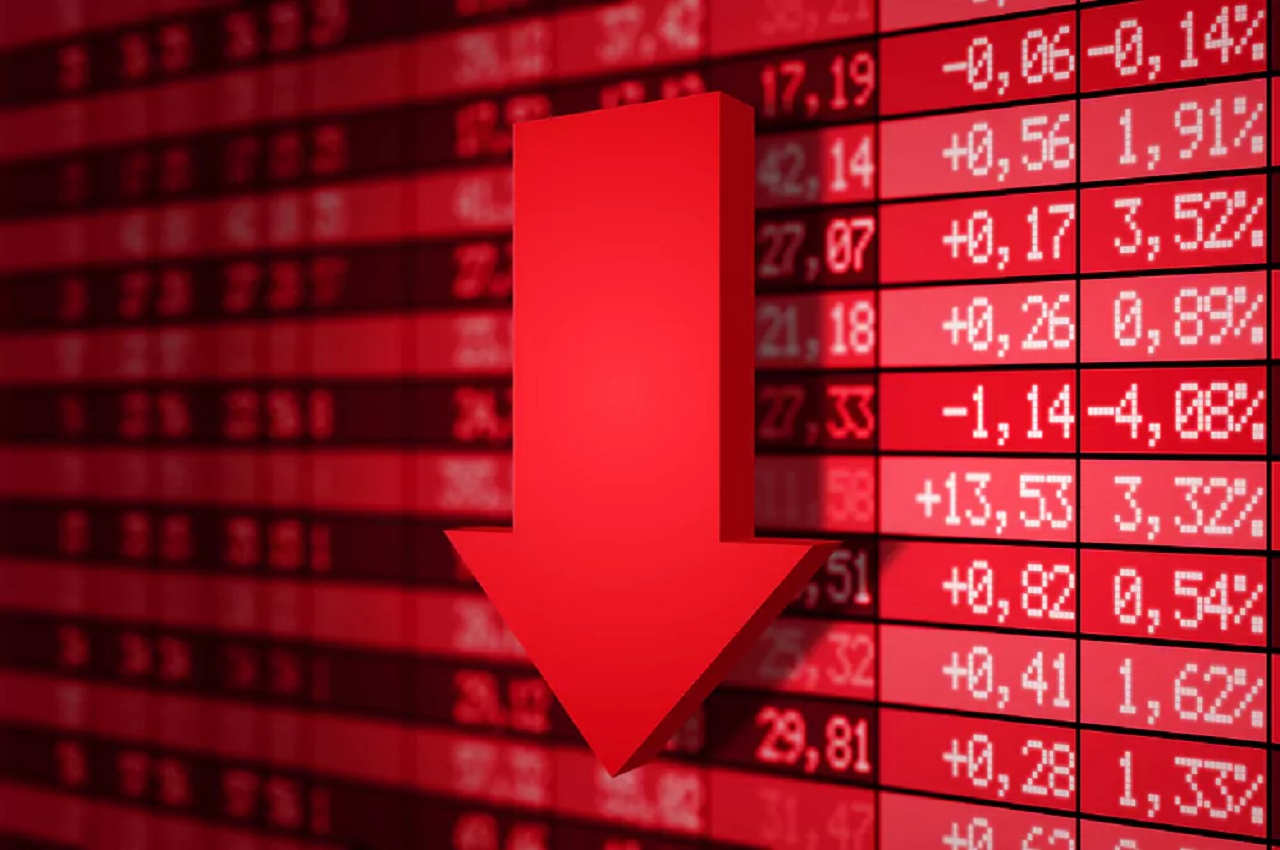Solana’s Futures Launch on CME: A Quiet Debut

If you happened to blink, you might have missed an important milestone in the crypto world: Solana’s SOL futures began trading on the Chicago Mercantile Exchange (CME) on Monday. This exchange is a key marketplace for U.S. institutional investors. However, unlike the historic launches of Bitcoin (BTC) and Ether (ETH) futures, Solana’s debut garnered surprisingly little attention.
On its first day, the SOL futures product recorded a notional trading volume of $12.3 million and closed with open interest at $7.8 million, which falls notably short of the inaugural figures for BTC and ETH futures, according to data from K33 Research. For perspective, Bitcoin futures launched in December 2017 with a staggering $102.7 million in first-day volume and $20.9 million in open interest. In comparison, Ether futures kicked off in February 2021 with a robust $31 million in volume and $20 million in open interest, as per K33.
Amid a backdrop of declining speculative interest in memecoins, bearish trends in the broader crypto market, and even a poorly received advertisement, Solana’s price experienced a sharp drop of approximately 10% from its weekend peak. In juxtaposition, Bitcoin and Ether saw smaller declines of 4.5% and 3.8%, respectively.
While the initial performance of SOL futures may appear uninspiring, K33 analysts Vetle Lunde and David Zimmerman argue that it aligns more closely with BTC’s and ETH’s figures when adjusted for market capitalization. As of Monday, Solana’s market cap hovered around $65 billion, which is significantly smaller than Ether’s $200 billion and Bitcoin’s $318 billion at the time of their respective CME launches.
The timing of Solana’s CME launch also played a pivotal role in its debut performance. Historical context reveals that Bitcoin’s CME futures arrived at the peak of the 2017 bull market, where speculative fervor was at an all-time high. Similarly, Ether’s launch coincided with the burgeoning altcoin rally of 2021, further fueled by Tesla’s announcement of Bitcoin purchases, which sparked increased institutional interest. In sharp contrast, the SOL futures began trading during a bearish market phase, lacking any significant hype or catalysts that might have driven immediate demand, according to K33.
The analysts at K33 noted, “It appears that institutional demand for altcoins may be limited, particularly as SOL’s introduction comes during a relatively risk-averse period.” Derivatives trader Josh Lim, founder of Arbelos Markets—which was recently acquired by prime broker FalconX—expressed optimism about the CME product, indicating that it opens new avenues for institutions to manage their exposure to Solana, irrespective of the initial demand levels. FalconX executed the very first SOL futures block trade on CME on that historic Monday, collaborating with financial services firm StoneX.
Lim stated, “There’s a palpable enthusiasm surrounding this new CME product launch.” He added that liquid funds would now have the capability to effectively manage their SOL holdings, including those who acquired locked tokens during the FTX liquidation process. Furthermore, exchange-traded fund (ETF) issuers looking to introduce SOL-based products may utilize CME futures as a foundational element for their ETFs.
“People are overlooking the broader implications of these new CME products,” Lim emphasized. “This development is set to revolutionize the access hedge funds have to altcoins.”







